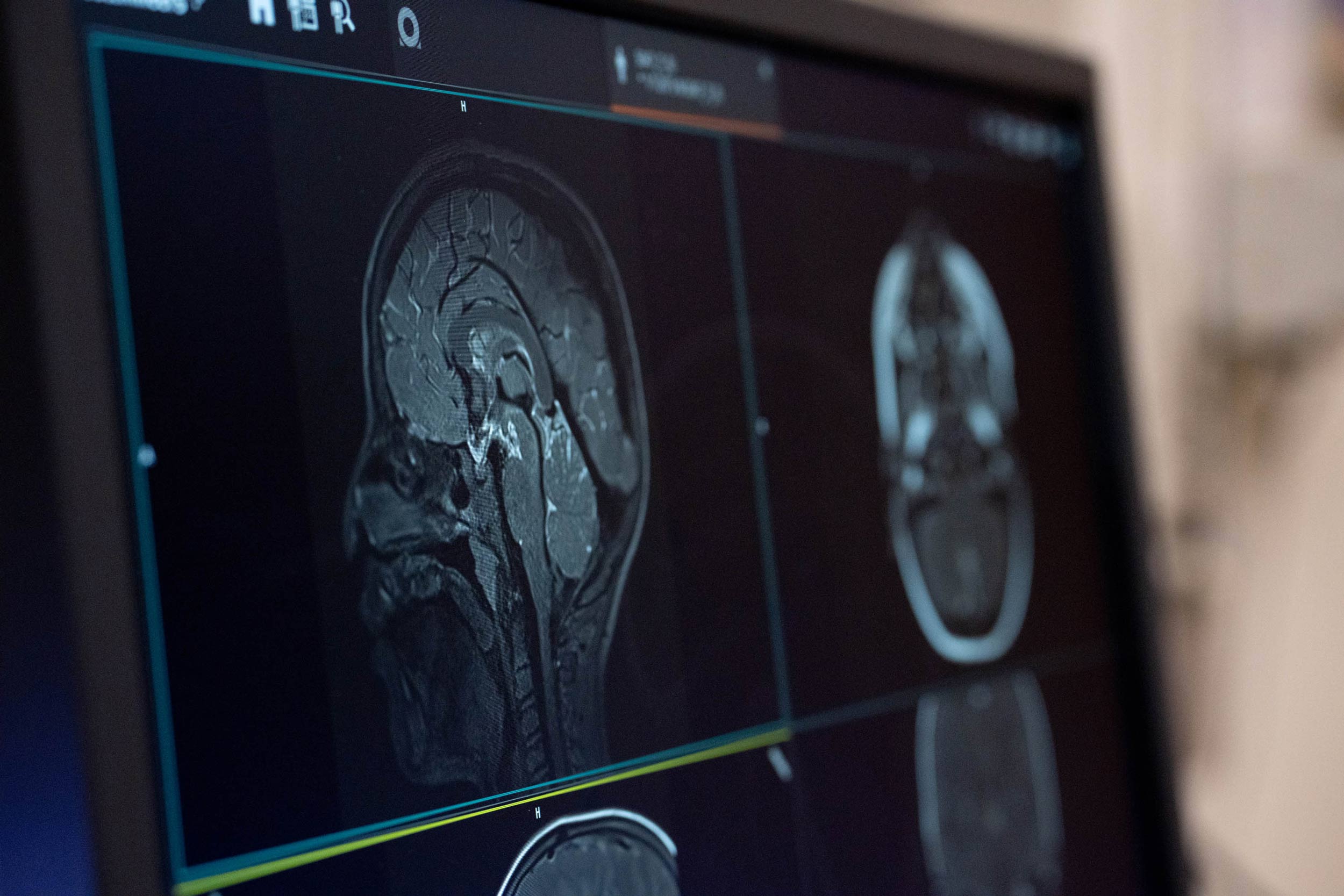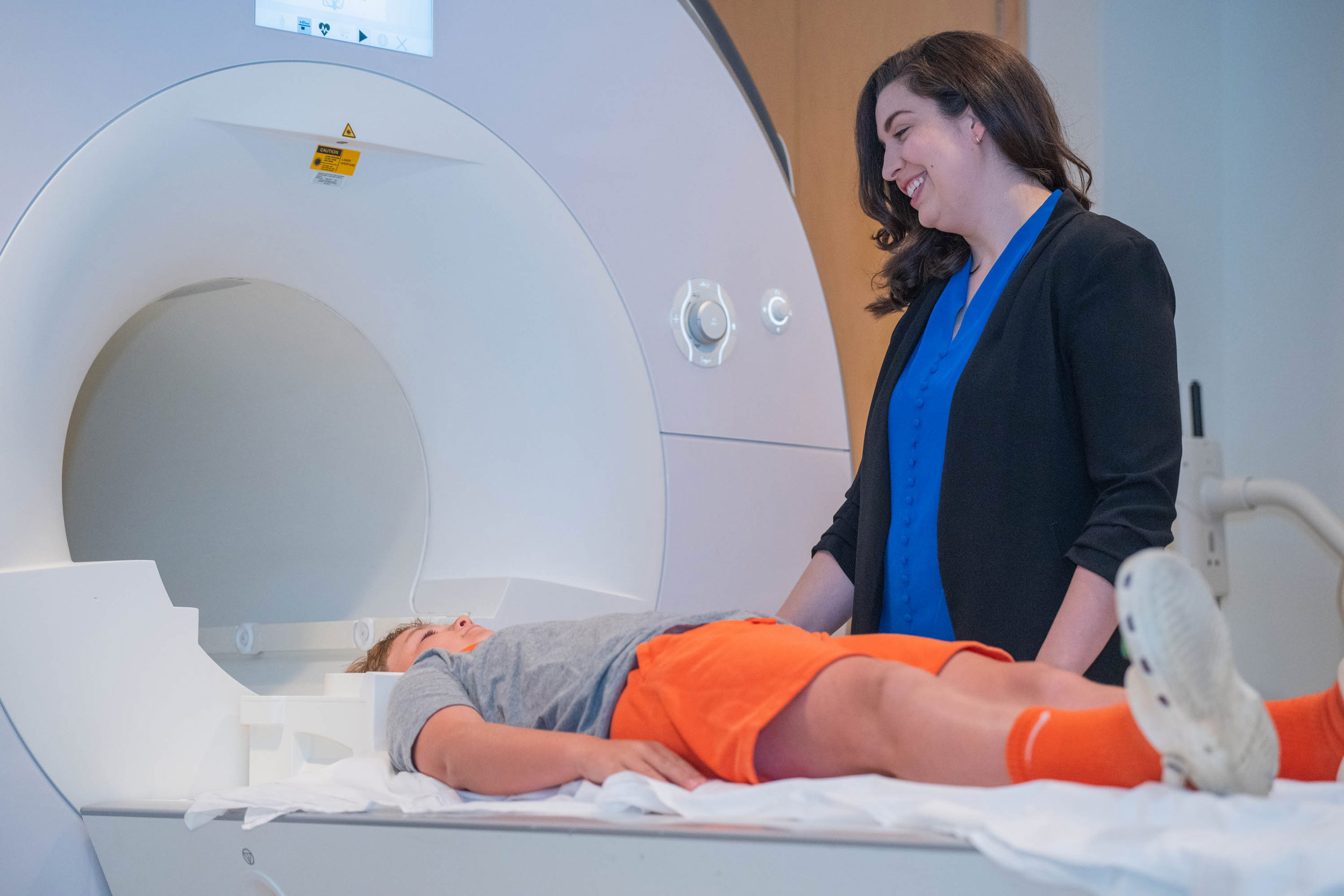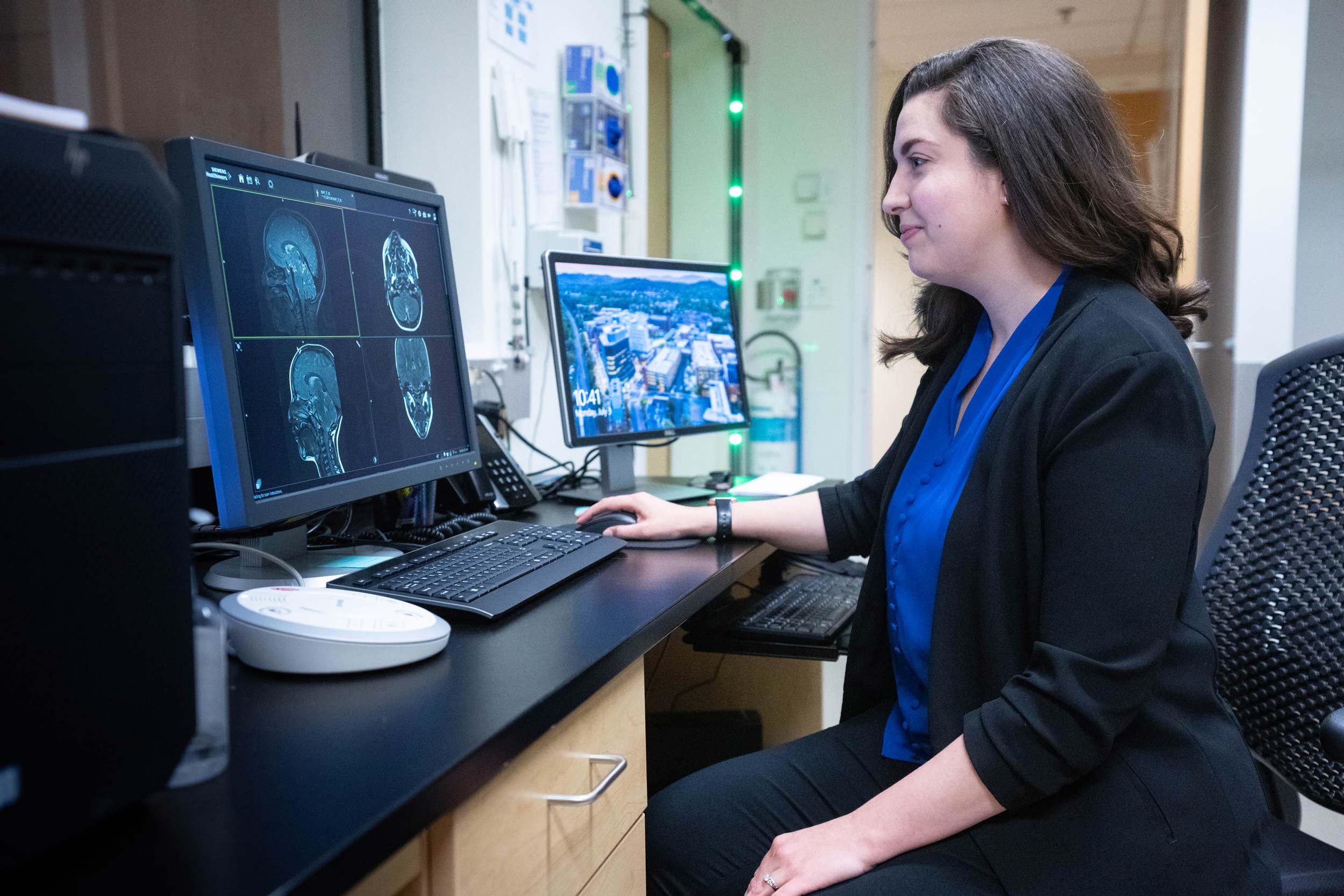MRI has been around a long time, but for this population, it’s relatively new. That’s because typical scans can take hours and they often require patients to be sedated. But that’s not the case for our protocols.
In our area of work, we are focused on young children, and we need to acquire data while they are talking. So, our data collection is fast and kids are awake and participating in the imaging process. We prep the kids before scans and do everything we can to make it quick and fun. We have scan sequences that allow us to get speech data in 8 to 11 seconds, dynamic data in under two minutes, and some really detailed 3D anatomy scans in about 3½ minutes. We’ve been able to use this data to identify the best surgery for a patient and, through our collaborations with the School of Data Science and in Biomedical Engineering, we’re developing some pretty cool ways to analyze the data quickly, predict outcomes, generate reports and make it meaningful for a clinician.
Q. Any other interesting new advancements you see on the horizon?
A. Generative AI is such a buzzword right now, but I think applying AI algorithms to speed up data analysis – which we’re working on with the School of Data Science – will play a big role in moving the research forward, because we can analyze large anatomic datasets much more quickly.
You need so much data to generate accurate anatomic models for a normal craniofacial population. When you have an abnormal craniofacial anatomy – because it’s such a heterogeneous population – you just need to analyze volumes and volumes of data. Once we incorporate that data into these models and pipelines, I think we’re going to see an explosion in what can be done.
Q. How do you envision these advancements improving the process for patients?
A. With the rapid rate of technology advancements, I hope within the next few years we’re seeing MRI become a standard part of the clinical assessment process.
Ideally, a child would come in for their multidisciplinary team visit and all the providers would do their assessments, including an MRI scan. Then the team would deliberate and make a decision right then and there. It’s about streamlining the assessment process and getting good, objective data to inform the recommendations and, ultimately, reduce the number of surgeries needed to achieve normal speech function.













